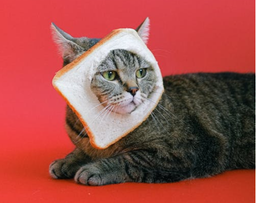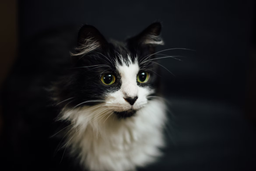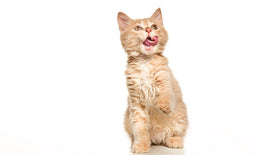Back to nature with the best Bengal cat diet from Untamed
As a cross between the Asian leopard cat and the Egyptian Mau, the Bengal is an exotic feline, famed for its wild appearance and energetic nature.
Regardless of how exotic they are, Bengals are cats and need meat-based nutrition.
As a cat parent, you want to make sure the diet you choose—whether dry, wet, raw, semi-moist, or homemade—is appropriate to help them maintain their health and energy.
It entails a bit of research and creating a tailor-made meal plan guaranteed to give your Bengal the required nutrients.
Untamed is here to help—we understand what Bengals need and can help you find the best dietary solution for your lounge leopard.
King of all he surveys
Source: Pixabay
What do Bengal cats eat?
Bengals, like all cats, are obligate carnivores with bodies evolved to process meat as their primary source of nutrition.
They are also excellent hunters, and in the wild, would survive on a natural diet of rodents, birds, and lizards. Leopard cats usually catch and eat small prey up to twenty times a day in the wild, so domesticated Bengals may favour small but regular meals.
The food you choose should reflect their carnivorous nature, so it must contain adequate proportions of:
- Animal protein
- Animal fat
- Vitamins and minerals
As an obligate carnivore, your Bengal will get all the nutrients they need from meat, so you should avoid commercial foods that use carb sources to bulk up their products.
Animal protein
Protein is the foundation of:
- Muscle
- Skin
- Coat
Cats metabolise the amino acids the proteins are made of to obtain the nutrients they need to live.
Felines can process vegetable protein, but not efficiently, so they need to eat more to cover their needs. Vegetable protein also lacks taurine—the amino acid cats need to maintain eye and heart health.
The best sources of animal protein are muscle meat and organs, such as the liver.
Animal fat
Fat is among the primary energy sources for cats—second only to animal protein—needed for hunting, healing, and reproduction. Animal fat also provides essential fatty acids, including:
- Linoleic acid
- Omega-3 and omega-6
- Arachidonic acid
These substances assist in the maintenance of cell structure and cats‘ healing processes.
As hunters, cats have also evolved to love the taste of animal fat—food with a good quantity of animal fat will be devoured with gusto. Pregnant cats tend to be particularly fond of fatty food.
Minerals and vitamins
Bengals also need vitamins in their diet, as follows:
|
Vitamin type |
Vitamins and their best sources |
|
Fat-soluble |
● Vitamin A—liver, fish, egg yolk, and butter ● Vitamin D—liver, kidney, fish oil, and eggs ● Vitamin E—liver, egg, wheat germ oil, milk, and butter |
|
Water-soluble |
● Vitamin B complex—meat, milk, eggs, and liver |
Cats can produce enough vitamins C and K on their own.
Small amounts of minerals should also be in a Bengal’s diet, namely:
- Zinc
- Magnesium
- Calcium
The prey a wild cat would usually hunt contains all the nutrients mentioned above.
What about carbs?
Compared to humans, cats‘ nutritional needs are simple. The biggest difference lies in our need for carbs, which do not belong in your Bengal’s diet.
Carbs consist of chains of carbon and hydrogen molecules and are broken down to deliver glucose for fast energy. If a cat eats food too rich in carbs, there is a danger that they won’t use the available energy quickly enough, which will then be stored as fatty cells. Many cats become overweight because:
- Their diet contains too many carbs and not enough animal fat
- The carbs deliver fast instead of slow-release energy
- The initial sugar rush from the food they eat soon turns into lethargy as their pancreas releases insulin to manage their blood sugar
What should the best food for Bengal cats contain?
If you want to feed your Bengal the best meals, the food you choose should be a high-protein, high-calorie diet with all the required nutrients in a small portion.
Which protein source is the best for Bengal cat nutrition?
The best protein sources are identifiable by their biological value (BV), the percentage of the amino acids in the protein a cat can metabolise.
The most common protein sources and their BV’s are:
|
Protein source |
Biological value |
|
98% |
|
|
Salmon, sardines, prawns, tuna |
94% |
|
Liver |
92% |
|
Beef and pork or ham |
87% |
|
Soya |
68% |
|
Wheatgerm, corn, sweetcorn, and other vegetable proteins |
Below 65% |
In addition to the protein source, good Bengal cat food is often enriched with cat jelly or gravy, which often contain much of the product’s fat content and enhance the palatability. This comes in handy when your cat has a poor appetite.
PLAAAAYTIIIIIIIME!
Source: Pixabay
How can you tell if a product meets Bengal cat food requirements?
Everything you need to know about the quality of cat food is on the label, but you must know what to look for.
The two most important pieces of information to check are the:
- Ingredients list
- Guaranteed analysis
Comparing and cross-referencing these two will tell you all you need to know about the food, including:
- Whether it is a high-quality or budget product
- How appropriate it is for your Bengal
- If it contains anything your Bengal should avoid
How does an ingredients list work?
The labelling of pet food is regulated by the Association of American Feed Control Officials (AAFCO) and its European counterpart, the European Pet Food Industry Federation (FEDIAF).
Under their guidelines, ingredients on cat food have to be:
- Comprehensive
- Listed in order of volume
Good cat food has a meat source as its first ingredient, but there are a few tricks that manufacturers use to confuse you, namely:
- Ingredient splitting
- Sugar, starches, and fibre
- Undefined ingredients
- Artificial additives
Ingredient splitting
If the cat food you are looking into contains grains and cereals, you should check whether any ingredients have been split according to the processing method.
As an example, you may find the following on the label:
- Ground corn
- Corn gluten
- Corn meal
These are all corn, but listing them as separate ingredients means that meat retains its place as the largest single ingredient. In truth, the product may contain more cereals than meat.
Sugar, starches, and fibre
If the ingredients list features any carbs, you should ensure they do not make up a large part of the product. In wet cat food, carbs are often added to increase palatability, as the sugar caramelises during the cooking process.
It is a sign that the food needs flavour enhancement because it lacks enough meat and animal fat. Cat biscuits are often loaded with useless fillers mentioned above.
Undefined ingredients
Many manufacturers buy whatever ingredients are cheapest at the time of production.
That’s why they are evasive about the exact recipe, so you may see terms like:
● Meat
● Animal derivatives
Neither of these is clear, and the actual ingredients in such products tend to change from week to week.
If your cat is sensitive, fussy, prone to digestive problems, or has a food allergy, you should avoid brands that are unclear about what they put in their products.
Artificial additives
Many ingredients lists feature artificial:
- Colourants
- Preservatives
- Flavour enhancers
If you do not recognise any of the ingredients, there is a chance they serve to bind the food, make it more attractive, or give it a longer shelf-life without contributing to the product’s nutritional value. Some artificial additives are known to be harmful to cats in large quantities.
What is the guaranteed analysis?
The guaranteed analysis tells you what percentage of each nutrient group is in the product, including:
- Protein
- Fat
- Carbs
- Moisture
If a cat food contains increased amounts of a particular substance—such as Omega-3 or Omega-6 fatty acid—the manufacturer may also highlight this.
To judge whether or not a food is high-quality, you should compare the ingredients list and the guaranteed analysis.
For Bengals, the best ingredients lists—indicating a high-quality food—are:
- Short
- Clear and concise
- Have a named meat source as the first ingredient
Check out the table below for the optimal ingredient ratio:
|
Nutrient type |
Ideal percentage |
|
Animal protein |
More than 50% |
|
Fat |
Up to 20% |
|
Carbs/fibre |
Less than 3% |
Untamed has the best cat food for Bengals
Untamed understands Bengals and knows how to keep them sleek, active, and playful.
We honour the following principles when making our delicious products:
- Human-grade ingredients
- High protein amounts
- Exclusively animal proteins
- Vet-formulated recipes
- Gentle steaming
- Ethical production
Human-grade ingredients
Every ingredient that goes into Untamed cat food is fit for human consumption.
We want your Bengal to get nothing but the best, so every ingredient we use must meet strict quality standards.
High protein amounts
Untamed meals contain more than twice the amount of animal protein you find in most commercial cat foods.
We understand that your Bengal needs top-notch nutrients to keep those muscles strong and those exotic markings looking cool.
Untamed’s high animal protein content also helps avoid bladder stone formation and maintains urinary tract health by keeping your feline’s bladder pH low.
Exclusively animal proteins
Feeding your Bengal with Untamed guarantees that you will only be providing animal protein.
A meat-based diet helps sick cats recover faster and assists with chronic conditions, such as diabetes.
Even if your feline is prone to food sensitivities, gastrointestinal issues, or allergic reactions, an animal protein source is the best way to keep them in check. Our product range contains two single-protein source recipes that are ideal for allergy-prone kitties—Chocka Chicken and Tuck-in Tuna.

Untamed understands the value of animal protein
Image (c) Untamed
Vet-formulated recipes
All our recipes are formulated under the supervision of vet nutritionists, so you can be sure your Bengal’s needs are being looked after with every tin.
All Untamed products contain the optimal amounts of protein, fat, vitamins, and minerals to maintain your feline’s long-term health.
Gentle steaming
We don’t want to destroy the goodness in our human-grade ingredients with aggressive cooking methods, so our meals are gently steamed to eliminate bacteria while keeping the nutrients at their best.
Ethical production
We are also committed to ethical production methods, so we use 100% recyclable packaging and only buy our ingredients from sustainable sources.
With all this goodness for your Bengal, you should try Untamed today and see the difference!

Training for the circus? No, just being me!
Source: Pixabay
Hunt your Untamed trial pack down today!
Getting your paws on Untamed cat food is so easy. Your cat is probably wondering why you haven’t done it already.
We design every meal plan according to your feline’s specific needs and deliver the goods to your door. We run an online cat food ordering service—no need to hunt shelves for Untamed. Our super tasty meals are appealing to cats of different ages. You can give them to kittens, adults, and seniors.
To get your cat Untamed, here’s what you need to do:
- Answer a few questions about your feline friend
- Check out the recommended custom meal plan
- Order your trial pack online
Your trial pack will land on your doorstep in no time, and you can enjoy watching your kitty go wild for Untamed delicacies.
Once your trial pack is finished, we will keep you regularly supplied with tailor-made cat food subscription boxes to ensure your cupboard is never bare.
The benefits of the Untamed diet should be visible quickly:
- Within a week—You should notice higher energy levels and less mess in the litter tray
- After two months—Kitty will look trimmer and more muscular
- Within four months—The feline’s coat will be looking sleek, and there’ll be fewer hairballs
- For life—Your Bengal should be active, playful, and healthy with no weight management issues
What else do you need to know about Bengals?
Bengals are naturally playful, energetic, and friendly cats. The most important aspects of looking after a Bengal are:
- Exercise and play
- Socialisation and interaction
- Care with curiosity
Exercise and play
Bengals are active cats that need plenty of exercise. While some Bengal cat parents managed to train their felines to walk on a leash, you don’t have to trouble yourself with that. You should be aware that your cat will love exploring and may be challenging to keep as an indoor cat.
Bengals also love water, so you may have to invest in some warm blankets and towels to dry them after a winter dip.
If your Bengal gets enough exercise, weight management should not be a problem.
Socialisation and interaction
Although they have the reputation of being wild—even feral—in their behaviour, Bengals are, in truth, highly sociable.
They enjoy human company and form strong bonds with their cat parents—you should expect to be used as a cushion regularly.
Care with curiosity
Bengals are highly curious and may want to try nibbling at various objects around the house.
You should keep your kitchen clear of any foods that may be harmful, including:
- Milk, cheese, and other dairy products (you can buy safe cat milk as an alternative)
- Chocolate or coffee
- Onions, garlic, and chives
- Yeast products
- Berries and citrus fruits
- Alcohol
Similarly, you may see your Bengal munching on grass or plants, either in the garden or indoors. Grass is fine as long as it isn’t treated with chemicals, but some plants may be toxic to your feline, including:
- Azalea
- Most lilies
- Croton (Joseph's Coat)
- Narcissus daffodils
- Caladium
- Dieffenbachia
- Rubber plants
- Weeping fig plants
- Philodendron
- Swiss cheese plant
- Oleander
- Poinsettia
- Christmas Cherry
- Holly berries (take care around Christmas time!)
Are Bengals prone to any issues?

Where’s my dinner?
Source: Pixabay
Bengals are generally healthy cats but can suffer from the following hereditary disorders:
- Cataracts and deteriorating eyesight
- Hypertrophic cardiomyopathy (HCM) and heart problems
- Progressive retinal atrophy (PRA)
Cataracts and deteriorating eyesight
While any senior cat can develop cataracts, Bengals may have a genetic predisposition to eye problems, even as kittens.
The most likely cause is a recessive gene, and responsible breeders routinely screen for issues in their breeding cats. You should check this before you become a Bengal parent.
Hypertrophic cardiomyopathy (HCM) and heart problems
HCM causes the heart muscle to swell and can lead to:
- Seizures
- Breathing difficulties
- Acute paralysis of the hind legs
The only way to determine if a Bengal is developing HCM is to rely on regular heart murmur tests. Most vets can perform this test, but you may want to visit a cardiologist to be sure.
Progressive retinal atrophy (PRA)
The primary symptom of PRA is the gradual deterioration in the feline’s eyesight, which will make your cat uncomfortable exploring at night.
PRA is a genetic disorder, and about 18 per cent of Bengals have it, although they might not lose their eyesight as a result.
You should check with a Bengal breeder for genetic tests—if one parent has it and the other doesn’t, there is little chance of a kitten developing PRA.
Bengals can also suffer from cataracts from an early age, but the problem can be solved with a routine surgical procedure.
Besides these disorders, Bengals are generally robust kitties with few health issues. Regular vet check-ups can help avoid any dental problems, and your Bengal’s energetic nature usually makes restrictive dieting unnecessary.



![Best food for Ragdoll cats in the UK [Broken Down]](http://untamed.com/cdn/shop/articles/featured_best_food_for_ragdoll_cats_uk.jpg?v=1646818249&width=256)

